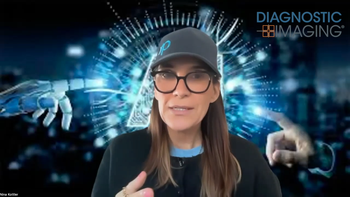
Tis the Season…For Mergers and Acquisitions in Radiology
Another radiology acquisition, another test for radiologists.
Amid the hype and public relations blitz of the announcement of the Aris acquisition of Optimal, is there only light, or is there perhaps some heat as well?
With more than 160 radiologists, this deal creates the second largest grouping, if not group, of radiologists in the U.S. With these kinds of numbers, the roles of the radiologist leadership in this mega-imaging conglomerate become paramount. Whether you are for or against this acquisition or any such increased corporate move into imaging and radiology, the one clear bright spot in the deal is the chief medical officer (CMO) for Optimal, now Aris, Chad Calendine, MD.
According to the press releases, Calendine will be maintaining his role as CMO within the new organization, with perhaps some between-the-lines hints of new potentials ahead. I had a chance to talk with Dr. Calendine about his view of radiology and the current landscape within radiology.
When asked about the ADI-Optimal partnership he said, “We brought knowledge of how to run radiology groups, work with partners and employees and provide a high level of service.” Behind the scenes, Calendine has been a strong presence within Optimal Radiology Partners, the partnership between Optimal Radiology and Advanced Diagnostic Imaging (ADI) of Nashville, TN, a partnership that was announced in November 2012.
When asked about the continuum between the corporate/business side and the physician side, he said, "Here, the agenda [has been] set by physicians. We’ve been involved with very accomplished business people [and] that level of business expertise cannot be purchased. To be a successful national radiology group it takes both – a strong physician leadership that understands the business side, and very strong business people that understand core health care principals.”
Finally, responding to a question about radiologists within standard radiology groups, Calendine said, “They underestimate the risk of inaction. So they believe the safest course is to keep doing what they’re doing. And, time has told us that is not the case. You must continue to morph, look for partnerships, re-envision your position. The analogy we use is the down escalator. We’re all on a down escalator, so if you want to maintain what you have, you have to turn around and start walking just to stay where you are. Most people are looking at their feet, and think they’re on stairs. Then they hit the bottom and fall.”[[{"type":"media","view_mode":"media_crop","fid":"34680","attributes":{"alt":"Optimal and Aris ","class":"media-image media-image-right","id":"media_crop_3530212019478","media_crop_h":"0","media_crop_image_style":"-1","media_crop_instance":"3690","media_crop_rotate":"0","media_crop_scale_h":"0","media_crop_scale_w":"0","media_crop_w":"0","media_crop_x":"0","media_crop_y":"0","style":"height: 66px; width: 300px; border-width: 0px; border-style: solid; margin: 1px; float: right;","title":" ","typeof":"foaf:Image"}}]]
With this acquisition, and potential additional acquisitions and mergers yet to come; I believe the question will be whether the physician leadership of the combined companies is up to the task of keeping a radiologist- and patient-focused agenda on the table. Or, will the corporate leadership exert their focus with little or no real, substantive input from the radiologists. As I have previously asked, “
Only time will tell, but radiologists and seasoned leaders like Dr. Calendine stand the best chance of weathering the corporate storms.
More to come…
Newsletter
Stay at the forefront of radiology with the Diagnostic Imaging newsletter, delivering the latest news, clinical insights, and imaging advancements for today’s radiologists.




























